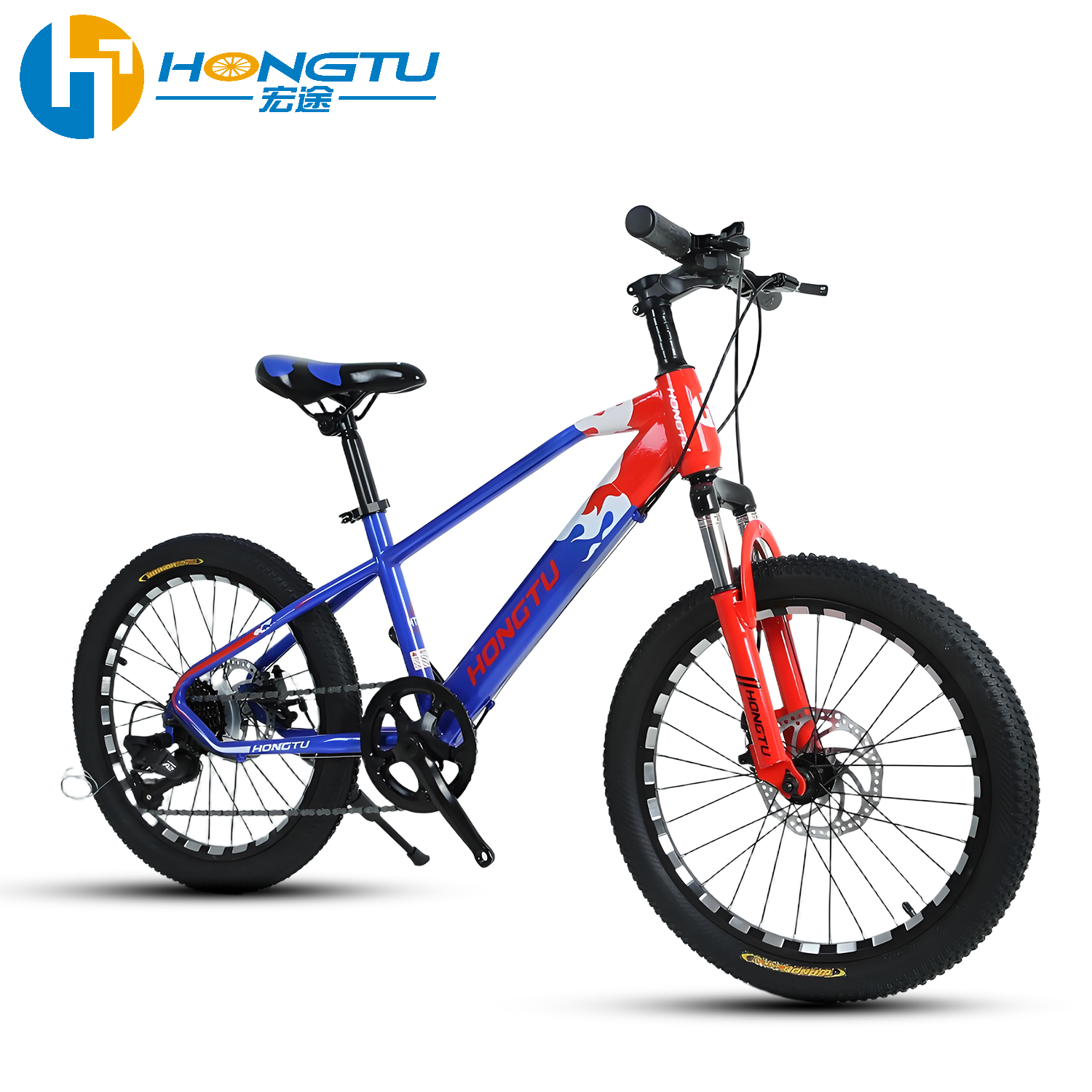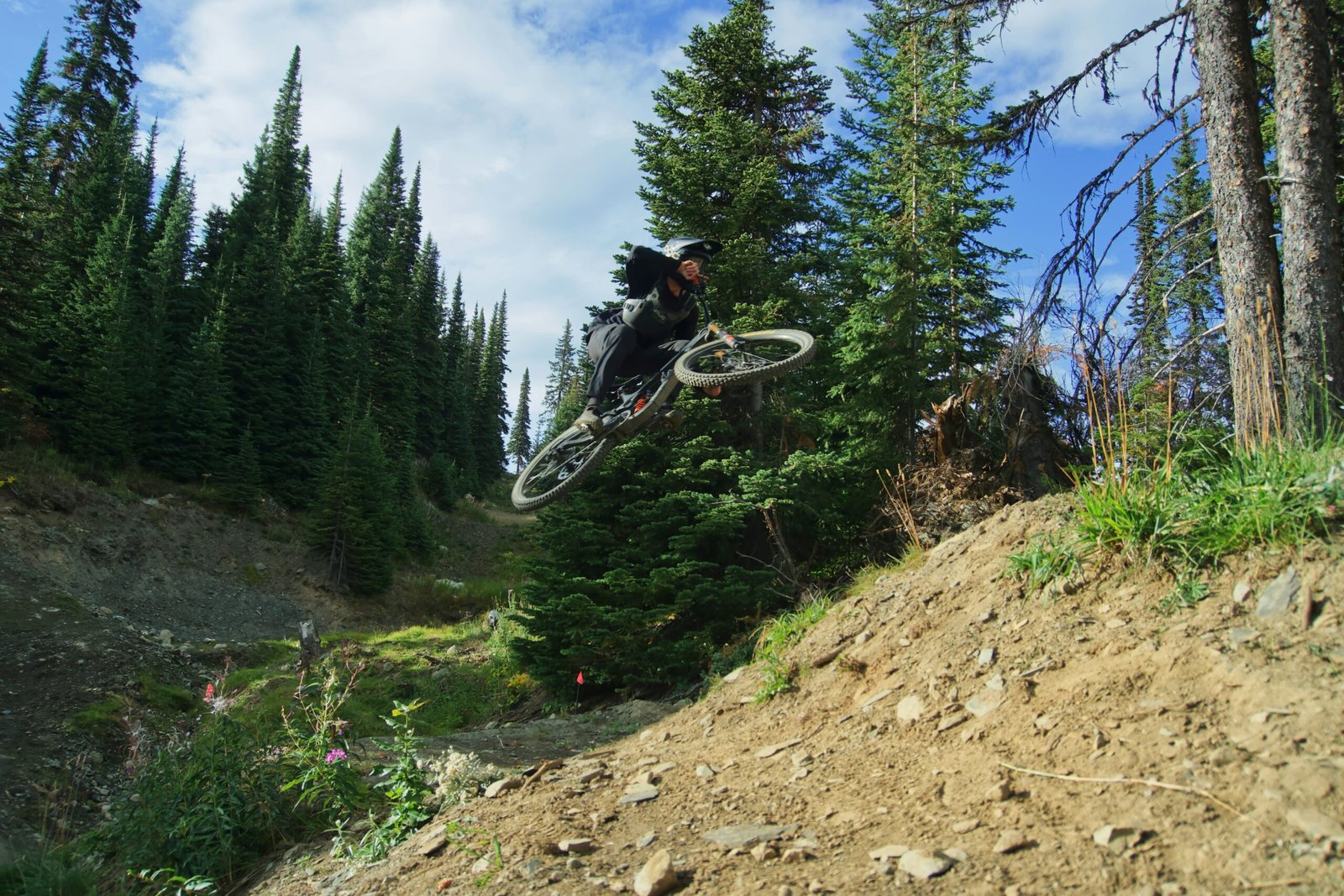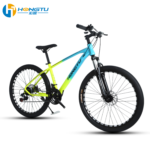Are Mountain Bikes Good In Snow


Introduction: The Snowy Challenge for Mountain Bikers
Mountain biking has long been a popular outdoor activity, offering an exhilarating way to explore nature while enjoying physical exercise. However, when winter transforms trails into snow-covered landscapes, it presents a new set of challenges for cycling enthusiasts. Snowy conditions can significantly impact mountain biking performance, requiring specialized equipment and techniques to navigate successfully. Riders must contend with slippery surfaces, the weight of snow accumulating on trails, and the potential for hidden obstacles that can arise in wintery terrains.
The principal challenge faced by mountain bikers in snowy climates is maintaining traction on icy or soft surfaces. Standard tires commonly used on mountain bikes may not be equipped to handle snow, which can lead to a loss of control and increased difficulty in maneuvering the bike. To counteract these issues, many bikers turn to specific snow bike innovations, including fat tires that offer a wider surface area for better grip, or even tire chains designed to enhance stability on slick inclines.
Another significant consideration for mountain biking in winter weather is the rider’s ability to navigate through varying depths of snow. Different types of snow, from powdery and loose to wet and compacted, can dictate the choice of equipment and riding techniques. Furthermore, the weather conditions—such as wind chill and temperature drops—can affect both rider performance and comfort, necessitating the use of appropriate winter apparel and gear designed for cold conditions.
These unique challenges set the stage for an exploration of how mountain bike design and technology have evolved to cater to snowy environments. This article will delve into the specific features that enhance mountain biking performance on snow-covered terrains and how cyclists can better prepare themselves for winter rides.
Tire Design and Width: A Key to Stability
The performance of mountain bikes in snowy conditions is significantly influenced by tire design and width. Wider tires play a crucial role in enhancing stability by distributing the rider’s weight more evenly across a larger surface area. This distribution is particularly vital in snowy environments, where the risk of sinking into the snow can be considerable. Compared to standard mountain bike tires, which typically measure around 2.0 to 2.5 inches, wider alternatives can exceed 4 inches in width. This additional width provides the necessary flotation needed to traverse soft snow, minimizing the likelihood of the bike becoming stuck.
In addition to width, the tire tread pattern is another essential factor when considering mountain bike performance in snow. An aggressive tread design, characterized by deeper lugs and spaces between them, enhances the bike’s grip on slippery surfaces. The increased surface area of these treads allows for better traction against the snow, preventing the tires from slipping. This tread pattern also aids in channeling away any accumulated snow or slush, further ensuring that the bike maintains its grip and stability when navigating tricky terrain.
The combination of wide tires and aggressive tread patterns is indispensable for riders seeking to explore snowy landscapes. Riders often report experiencing increased confidence and control while descending or climbing in snow when properly equipped with these features. Ultimately, selecting the right tire design and width becomes key not only for performance but also for ensuring safety during winter biking adventures. As enthusiasts venture into snow-covered trails, understanding these aspects of tire technology can make a significant difference in their overall experience.
Suspension Systems: Absorbing the Bumps
Mountain biking in snowy conditions presents unique challenges that can significantly impact a rider’s performance and comfort. One of the critical components that facilitate navigating these unpredictable terrains is the suspension system. The primary function of a suspension system is to absorb shocks from uneven ground, providing crucial support when traversing through snow-covered trails. Unlike traditional bicycles, mountain bikes are specifically designed to handle these kinds of extreme environments, with their suspension systems playing a pivotal role.
There are two main types of suspension systems commonly found in mountain bikes: hardtail and full suspension. Hardtail mountain bikes feature front suspension only, allowing for a lighter frame and greater efficiency on smooth paths. However, in snowy conditions where the terrain frequently varies, a full suspension system is often more beneficial. Full suspension bikes include both front and rear shock absorbers, greatly enhancing the rider’s comfort and control. This dual-system helps maintain contact with the ground, reducing the jolts felt by the rider from bumps and dips hidden beneath the snow.
Additionally, the plushness offered by a well-engineered suspension system can improve traction. Snow can conceal rocks and roots, leading to sudden drops or uneven surfaces. A responsive suspension allows the bike to adapt to these changes more seamlessly, ensuring that the tires maintain grip. This added control can make a significant difference in rider confidence, enabling smoother navigation through challenging winter trails.
Ultimately, the quality and design of a mountain bike’s suspension system can substantially enhance the riding experience in snowy conditions. By absorbing impacts and providing better traction, these systems not only ensure comfort and convenience but also enhance overall performance on snow-laden paths.
Frame Geometry: Design for Control
The frame geometry of a mountain bike plays a critical role in ensuring stability and control, particularly in challenging snowy conditions. One of the primary components of effective frame geometry is the distribution of weight across the bike. Bikes designed with a lower center of gravity inherently provide improved balance, which can be especially beneficial when navigating slippery or uneven terrain characteristic of snow-covered trails. This lower center of gravity enhances the rider’s ability to maintain control during descents and sharp turns, as it reduces the risk of tipping over.
Another significant aspect of frame geometry is the upright riding position that many mountain bikes offer. This position allows riders to have better visibility and a more responsive connection with the bike. An upright posture facilitates swift adjustments in body weight, which is crucial when maneuvering across varied surfaces such as thick snow or icy patches. Riders can shift their weight forward or backward, influencing the bike’s handling and grip. Moreover, this positioning aids in optimizing traction on snow, allowing riders to adapt effortlessly to unpredictable changes in conditions.
The combination of a lower center of gravity and an upright posture not only aids maneuverability but also fosters confidence in the rider. When one is assured of their stability and control, they are more likely to tackle the rugged challenges presented by snowy environments. In this sense, mountain bikes designed with thoughtful frame geometry enhance the overall riding experience, increasing both safety and enjoyment. Riders can navigate through fresh powder or crusty snow with greater efficacy, making these specially crafted mountain bikes ideal companions for winter biking adventures.
Gearing: Tackling Resistance with Ease
The gearing systems of mountain bikes play a crucial role in their performance, especially when navigating through snowy terrain. In such challenging conditions, lower gear ratios become particularly advantageous. These gear ratios allow cyclists to pedal with less resistance, which is essential when the snow creates a dense, sticky environment under the wheels. The ability to easily shift into a lower gear can significantly enhance a rider’s experience, enabling them to maintain their momentum and tackle obstacles without exerting excessive force.
When faced with deep snow, mountain bikers often encounter increased resistance that can hinder progress. Utilizing a gearing system designed for lower gear ratios allows for easier pedaling, providing an efficient means to manage the unique challenges presented by snow-covered trails. This is especially beneficial when ascending hills where gravitational forces combine with the existing snow resistance, making pedaling much more demanding than on dry terrain. With the right gearing, riders can sustain a more consistent speed, facilitating a smoother ride and reducing fatigue.
Moreover, the configuration of gearing in mountain bikes permits better control when navigating steep slopes or navigating icy patches. By selecting lower gears, bikers can fine-tune their cadence while maintaining traction on uneven and slippery surfaces. This efficiency not only contributes to less physical strain but also enhances overall safety, as it allows for more manageable handling and responsiveness. Therefore, selecting a mountain bike with an appropriate gearing system designed for snowy conditions can make an immense difference in a cyclist’s ability to enjoy their ride in less-than-ideal circumstances.
Additional Features: Enhancing Snow Performance
To optimize mountain biking in snowy conditions, numerous enhancements can be considered to significantly improve traction, stability, and overall performance. One of the most vital upgrades is the use of studded tires. These tires are engineered with metal studs that protrude from the tread, providing improved grip on packed snow and icy surfaces. The added traction from each stud allows riders to maintain control, reduce slippage, and conquer icy descents and turns with confidence. Selecting the right studded tire involves considering the terrain and weather conditions, as certain designs might be better suited for softer snow than hard, icy trails.
Another critical feature for snow biking is opting for fat bikes. Fat bikes, characterized by their wide tires, are specifically designed to function on soft and unstable terrains, such as snow. The increased tire volume allows for a larger footprint, effectively distributing the rider’s weight and preventing sinking into soft snow. This design not only enhances stability but also enables smoother navigation across varied snowy landscapes. When equipped with the appropriate fat bike, riders can enjoy a more comfortable and controlled experience while traversing through winter trails.
In addition to tires and bike style, considering gear such as appropriate clothing and accessories is essential. Layering clothing made from moisture-wicking materials helps regulate body temperature while riding in cold conditions. Gloves that provide both warmth and dexterity, along with biking goggles that offer protection against wind and snow glare, enhance the overall riding experience significantly.
Ultimately, integrating these additional features into one’s mountain biking setup will greatly enhance performance and stability in snowy environments. Proper preparation and equipment can transform challenging winter rides into enjoyable adventures, allowing bikers to fully embrace the beauty and excitement of snowy trails.
Safety Considerations: Riding Responsibly in Snow
When mountain biking in snowy conditions, safety should be a primary concern for every rider. The dynamics of riding on snow differ significantly from those on dry terrain, necessitating a thoughtful approach to gear selection and riding techniques. Proper attire is essential, as it helps regulate body temperature and maintain comfort during exposure to cold weather elements. Riders should opt for moisture-wicking base layers, insulating mid-layers, and waterproof outer shells to shield against the wind and snow. Additionally, wearing gloves and thermal headgear can prevent extremities from succumbing to cold, thus enhancing overall comfort and safety.
A key element of riding safely in snowy environments is understanding the specific conditions of the snow. Variability in temperature can lead to differing snow textures, ranging from powdery to icy. Powder snow may provide a soft ride, but can easily obscure hazards, while ice presents a slippery surface that may hinder control. Riders should assess the type of snow and terrain before embarking on their journey, as well as remain aware of changing weather conditions that could impact trail integrity.
Maintaining control of the mountain bike in snowy conditions is integral to ensuring a safe experience. Riders should lower their tire pressure to enhance traction, helping to prevent slips and falls. Moreover, altering riding techniques is important; leaning back slightly while descending can prevent oversteering, and making gradual turns can mitigate the risk of losing control. Frequent practice in such environments can also help riders develop the necessary skills to navigate different snow conditions effectively. All these considerations collectively contribute to a safer and more enjoyable mountain biking experience in the snow.
Real-World Experiences: Riders Share Their Stories
Mountain biking in snowy conditions presents a unique blend of challenges and exhilaration, as various riders have enthusiastically shared their experiences. A frequent participant in winter biking, Martin reflects on his adventures in the snowy backcountry. He describes the thrill of gliding down freshly fallen snow, highlighting the importance of choosing the right tires. “I switched to winter-specific tires that provided better grip and traction,” he notes, emphasizing how this simple modification transformed his riding experience. Martin advises fellow bikers to embrace the changing dynamics of their riding style when tackling snow.
Another mountain biking enthusiast, Jenna, recalls a memorable ride down a shaded trail during a snowstorm. “The white landscape was mesmerizing, but the snow obscured rocks and roots,” she explains. Jenna emphasizes the need to remain vigilant and adaptable when riding in snow, as conditions can change quickly. She adds that layering clothing was crucial for comfort, allowing her to remain warm while navigating tricky terrain. This adaptability is key to enjoying and conquering winter trails, according to Jenna.
Rider testimonials highlight not just the practical aspects of biking in snowy conditions but also the sheer joy and camaraderie that comes with it. Alex speaks of encountering other riders on the trail, sharing tips and laughter. “There’s something special about riding together in the snow,” he states. The sense of community, alongside the challenges of snowy trails, fosters a spirit of camaraderie among winter riders. These anecdotes shine a light on the dynamic nature of mountain biking in winter, showcasing both the thrill and the unpredictable demands of snowy terrains.
Comparative Analysis: Mountain Bikes vs. Other Cycling Options
When considering cycling in snowy conditions, it is imperative to evaluate the performance of various types of bicycles, particularly mountain bikes, road bikes, and hybrid bikes. Mountain bikes are specifically designed for rugged terrains and often come equipped with features conducive to snow riding. Their wider tires offer better traction on slippery surfaces, while the suspension systems enhance stability, preventing the rider from losing control. Furthermore, the geometry of mountain bikes is optimized for downhill handling, which can be particularly advantageous in snowy environments where balance is critical.
In contrast, road bikes, characterized by their slim tires and lightweight frames, tend to perform poorly in snow. The narrow tires provide insufficient grip, leading to a higher risk of slipping and falling. While some may argue that road bikes can be outfitted with specialized tires designed for winter conditions, these modifications often do not yield the same performance benefits that mountain bikes inherently have. Due to their design, road bikes are generally unsuitable for navigating through challenging snowy paths, which is a significant disadvantage.
Hybrid bikes, which combine elements from both mountain and road bikes, present a middle ground. They possess wider tires than traditional road bikes, but typically not as wide as those found on mountain bikes. While hybrids can handle light snow conditions reasonably well, they still lack the robust features that mountain bikes offer, such as advanced suspension systems. Experts suggest that for extensive snowy riding, mountain bikes remain the superior choice due to their dedicated design for off-road conditions and adaptability to harsh weather.
Ultimately, while road and hybrid bikes may be used in snowy conditions, mountain bikes stand out as the more appropriate option for cyclists seeking stability, safety, and performance in winter terrains.
Conclusion: Embracing the Snow with Confidence
Throughout this exploration of mountain bikes and their performance in snowy conditions, it becomes clear that these versatile machines are capable of tackling the challenges winter presents. With the right tires designed for snow, appropriate gear, and a solid understanding of riding techniques, mountain biking in snowy terrains can be a thrilling and enjoyable experience.
One of the primary factors that enhance the performance of mountain bikes in snow is the choice of tires. Fat tires, with their increased surface area, allow for better traction and stability on slippery surfaces. This significant interaction with the snow enables riders to navigate through varying types of terrain, from powdery trails to more consolidated areas. Additionally, the ability to adjust tire pressure can further optimize handling, making it easier to conquer icy patches or soft snow.
The importance of technique cannot be overstated when it comes to riding in winter conditions. Riders must adapt their skills, maintaining a smoother cadence and balance to prevent slipping. Emphasizing proper weight distribution and a lower center of gravity facilitates control, enhancing safety during rides. Accordingly, participants can not only expand their biking repertoire but also enjoy the unique beauty that snowy landscapes offer.
In conclusion, mountain biking in snowy conditions is not only feasible but can also be approached with confidence. By understanding the essentials—ranging from equipment choices to riding techniques—enthusiasts can embrace the invigorating experience of cycling through winter’s beauty. Ultimately, the knowledge shared in this post empowers riders to embark on this adventure, encouraging them to seize the excitement that snowy mountain biking presents.


